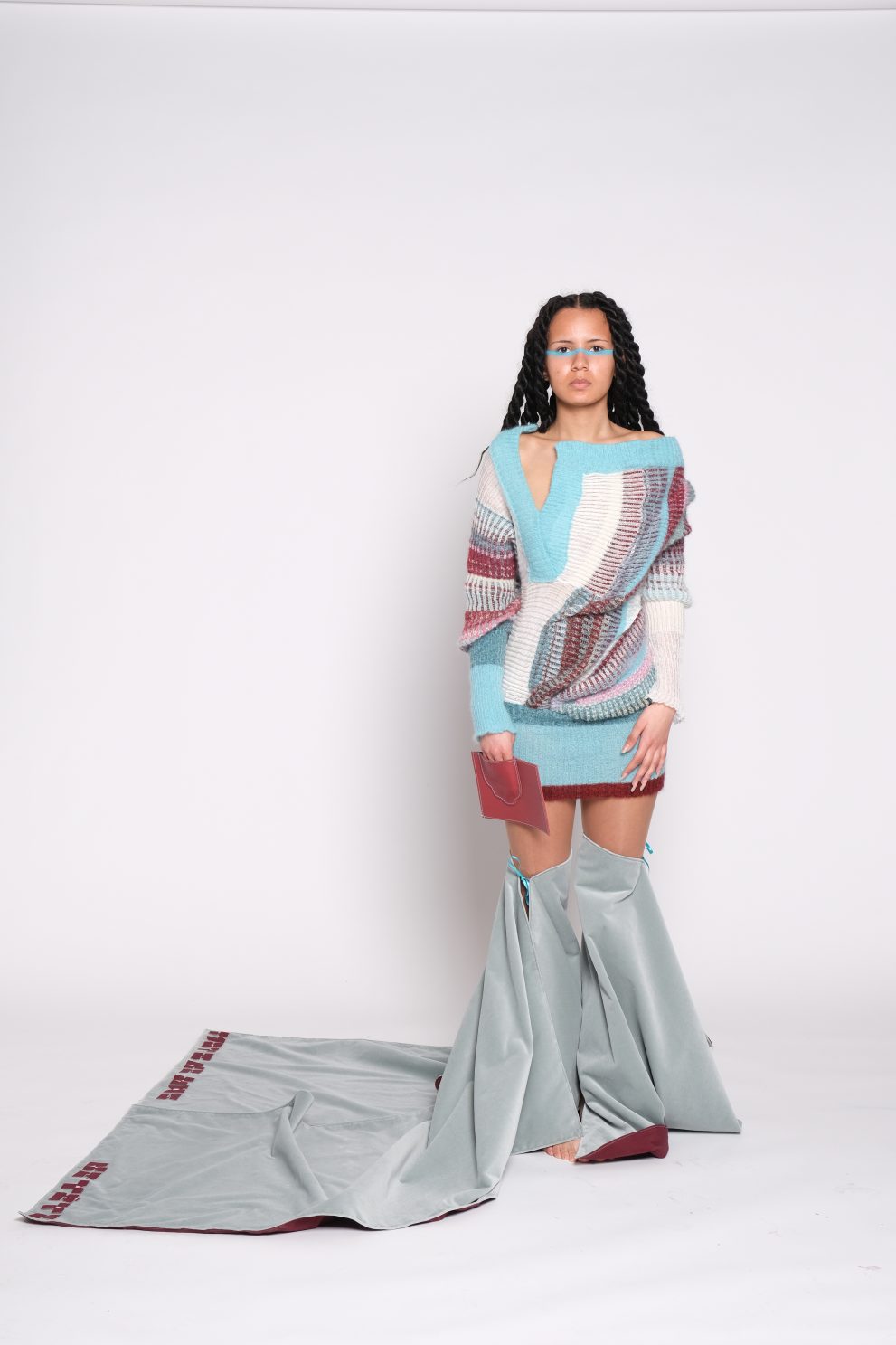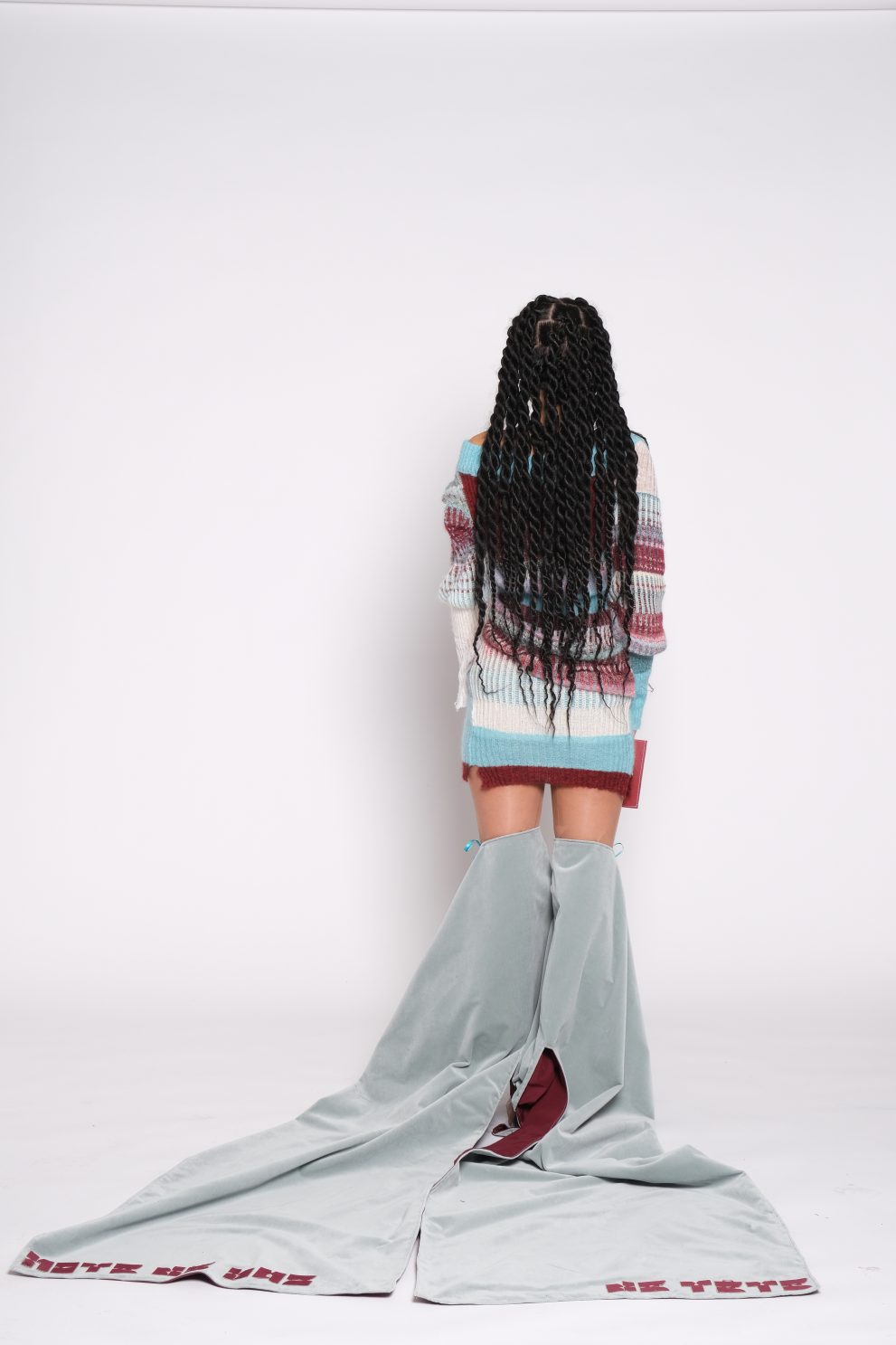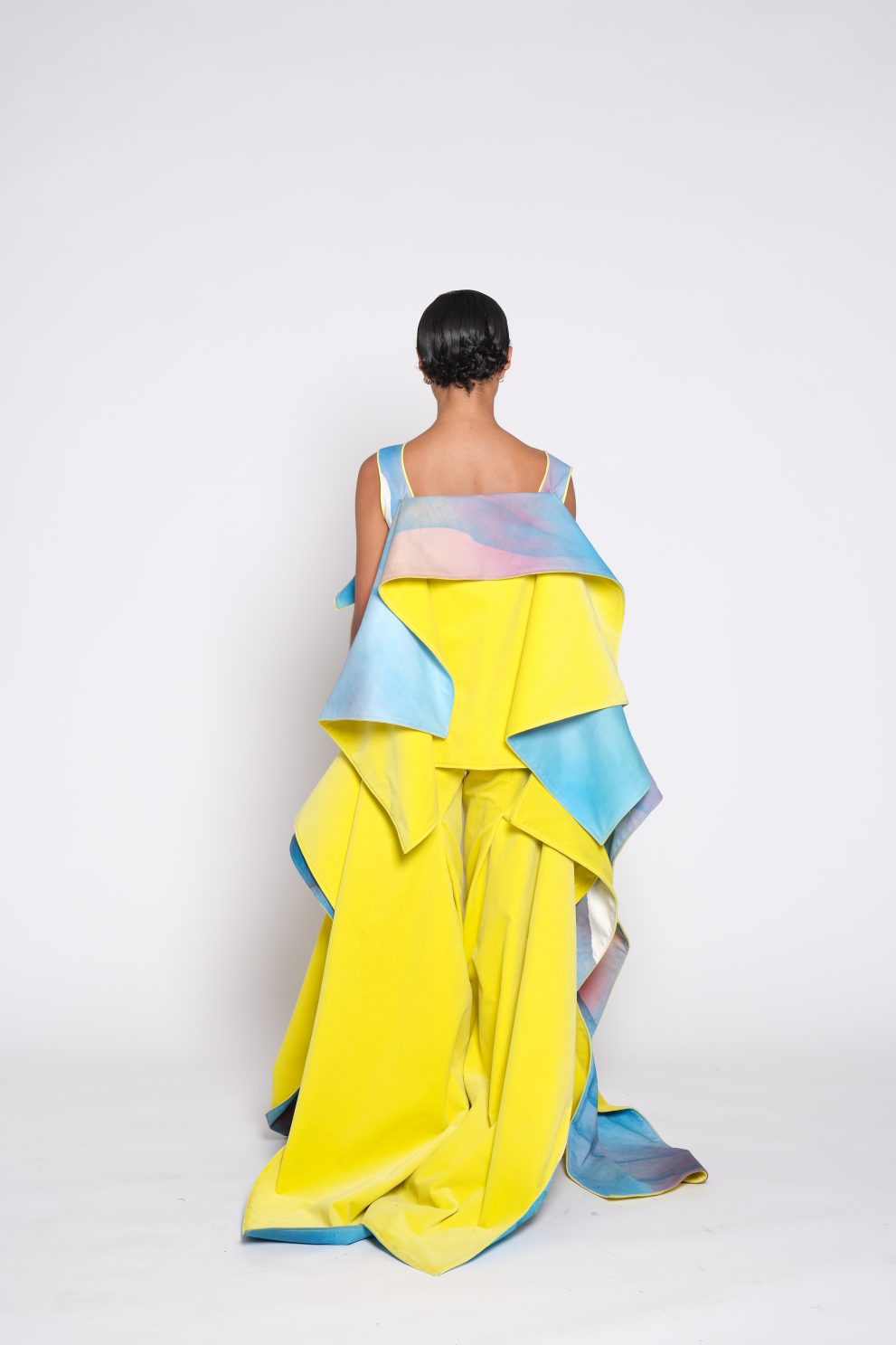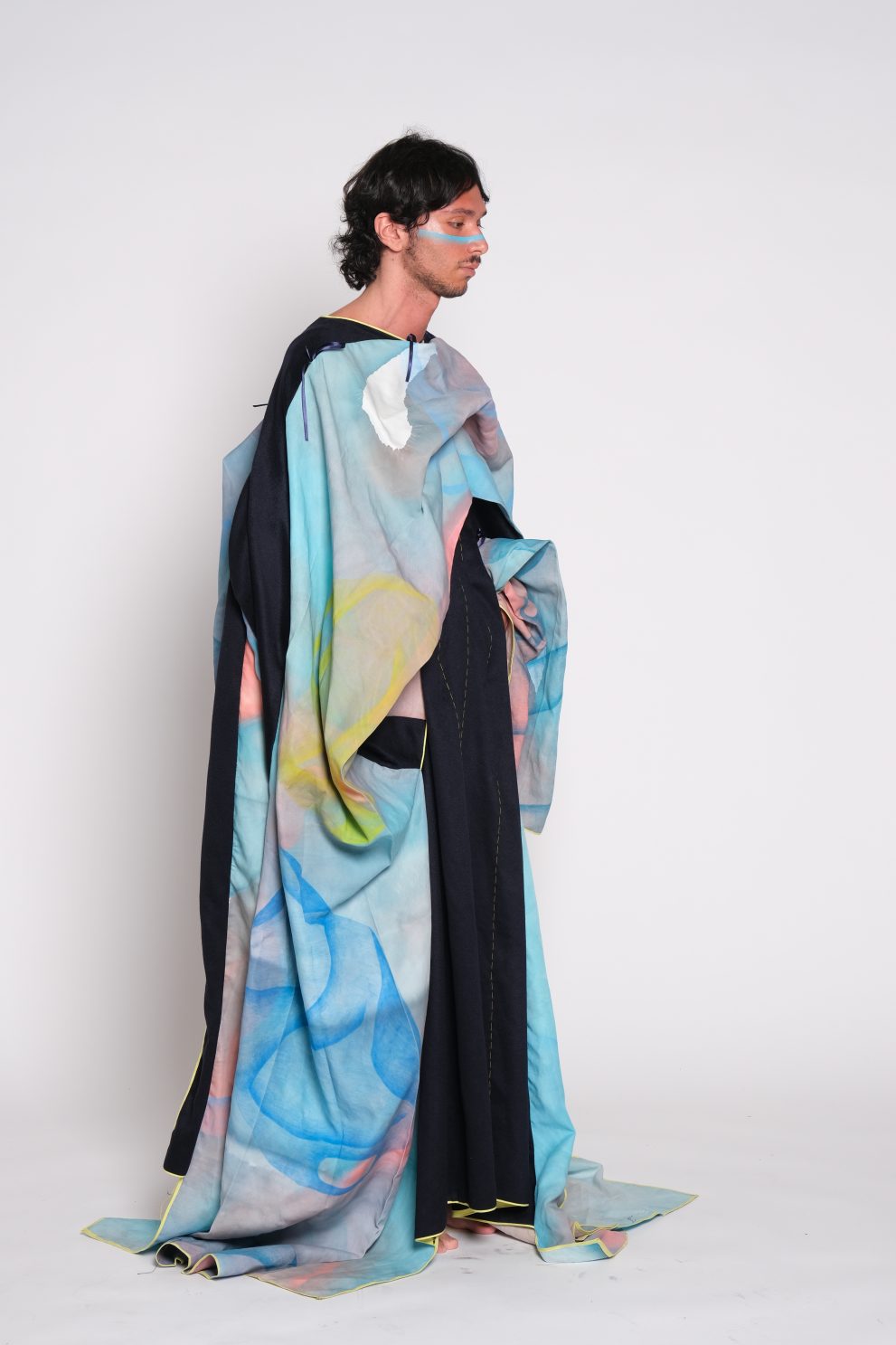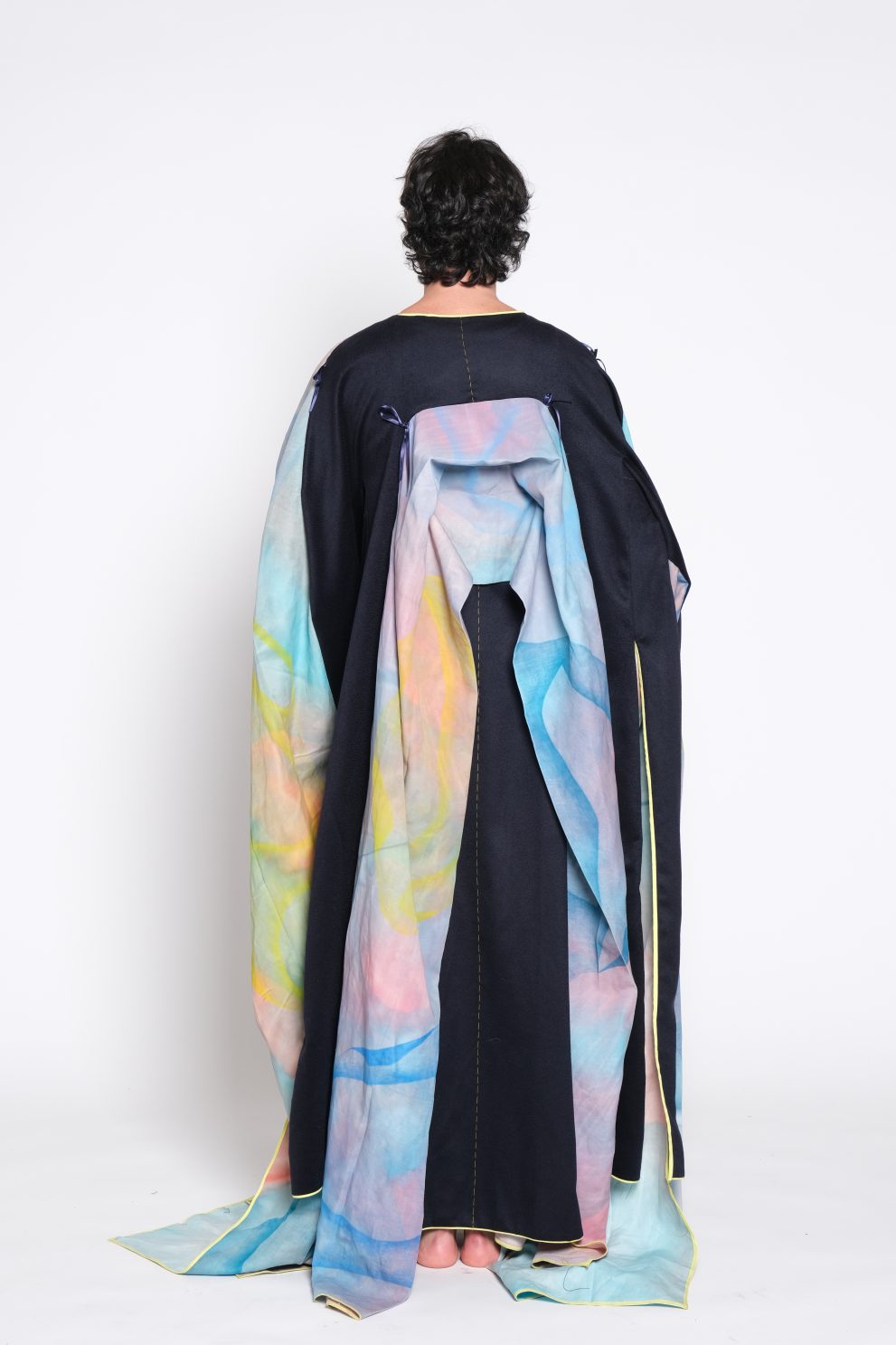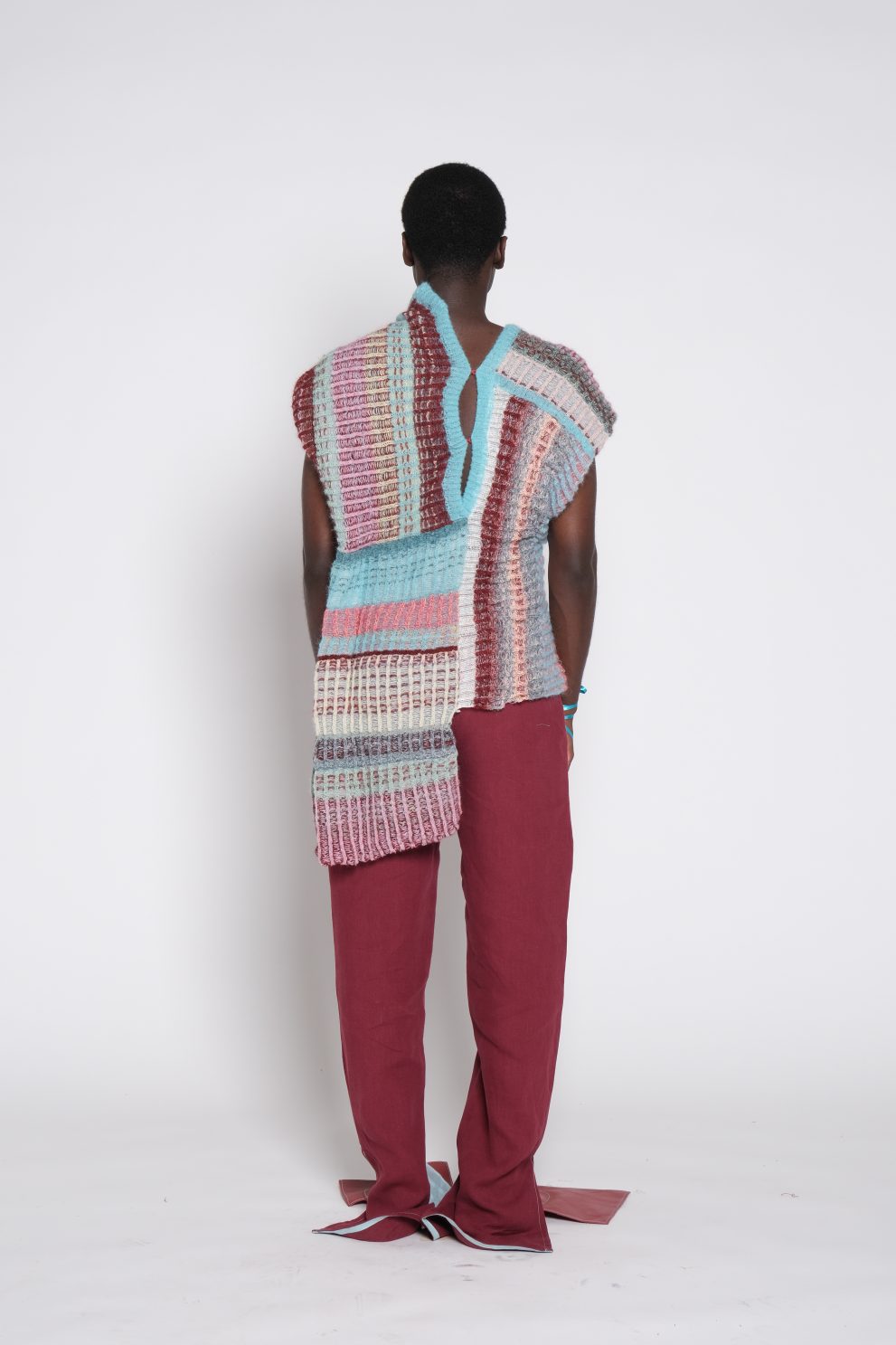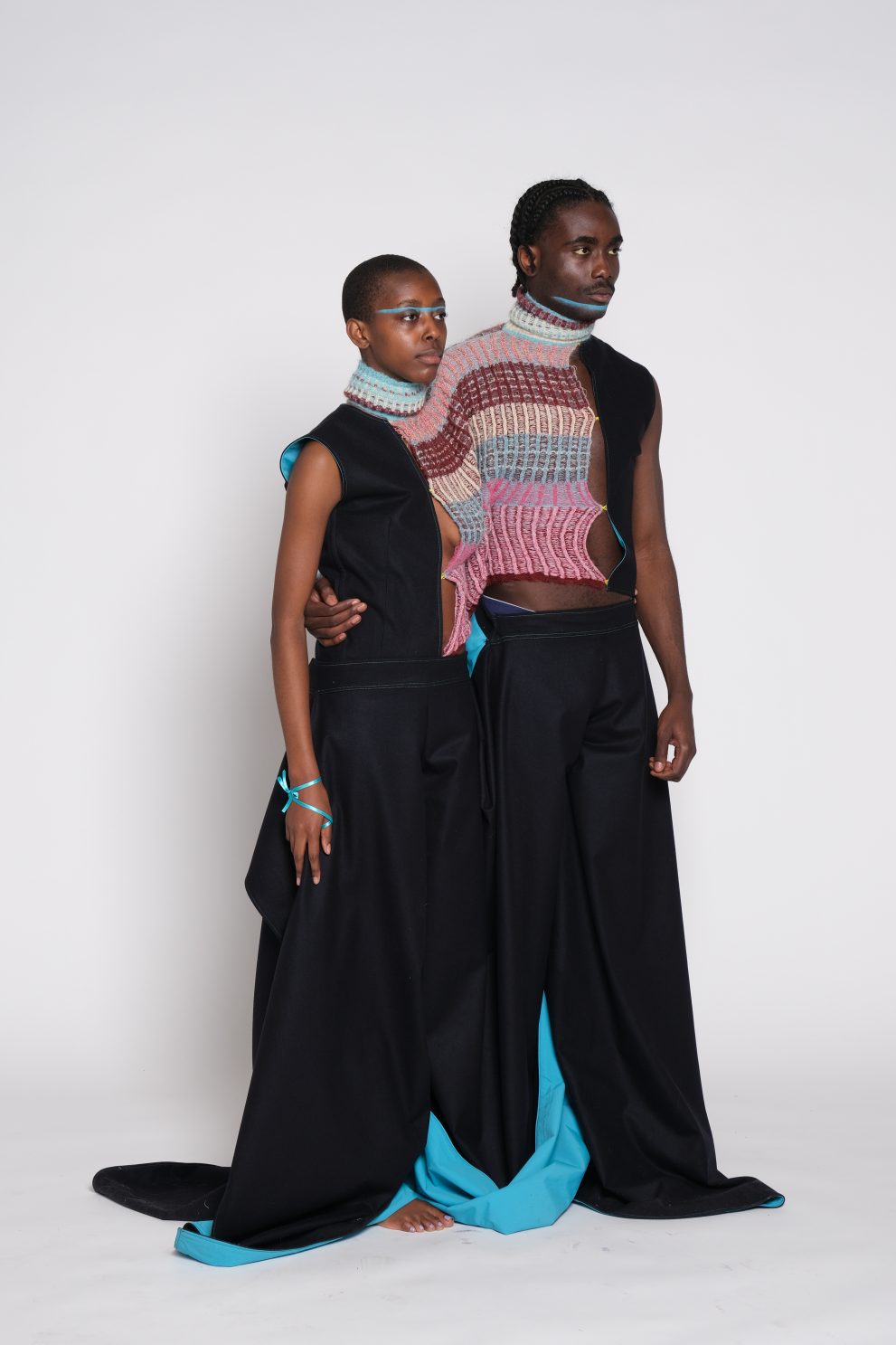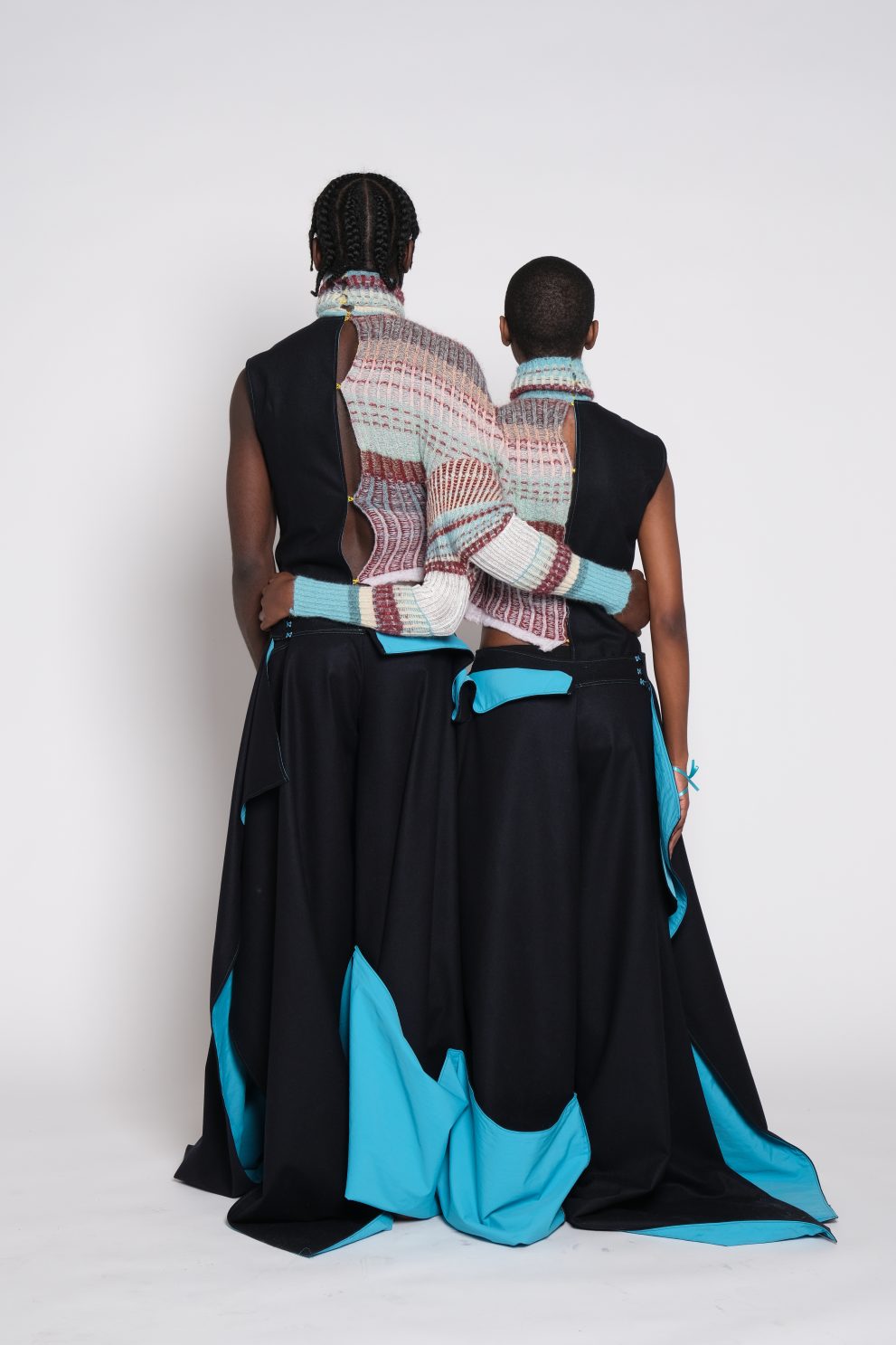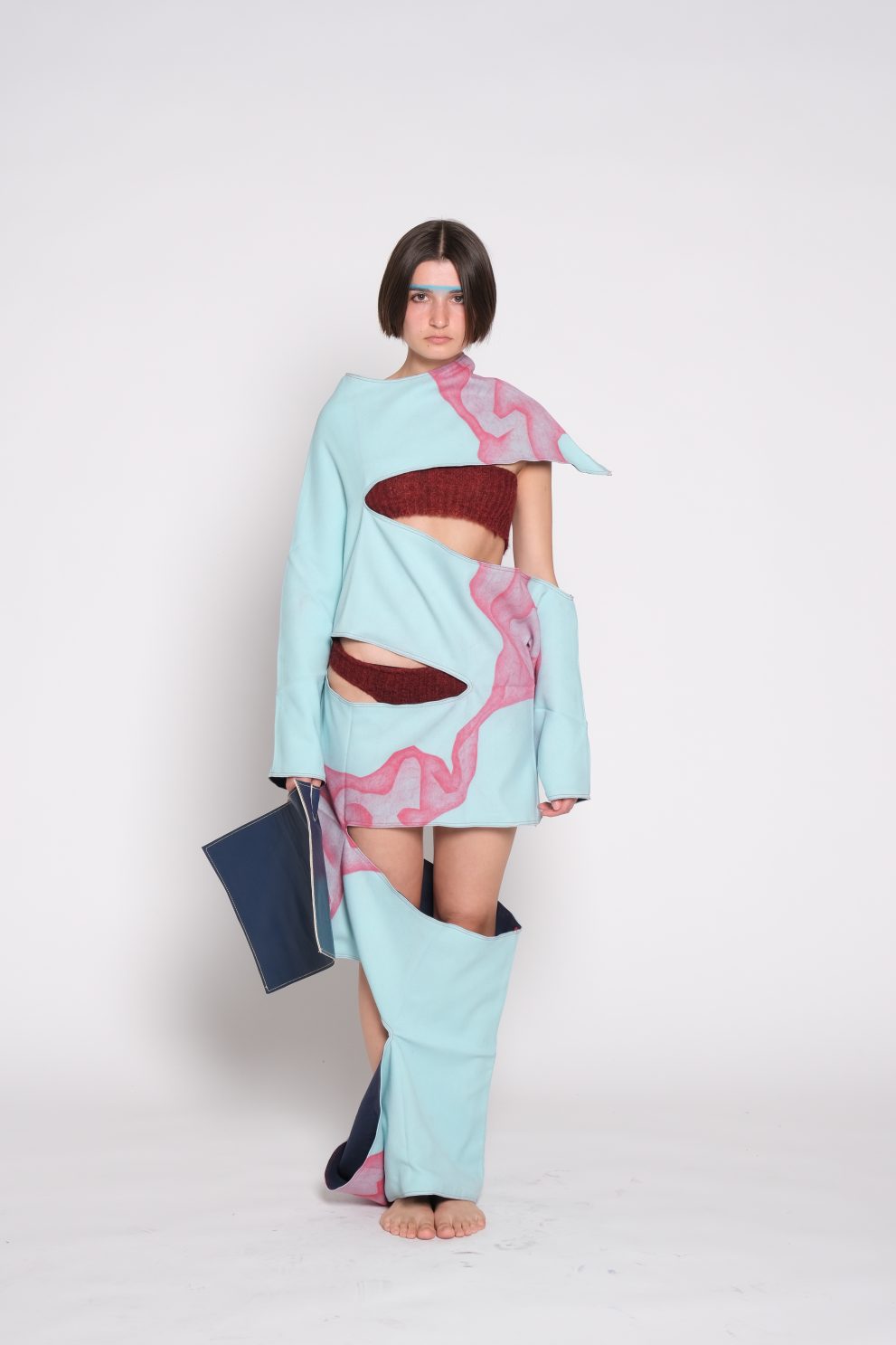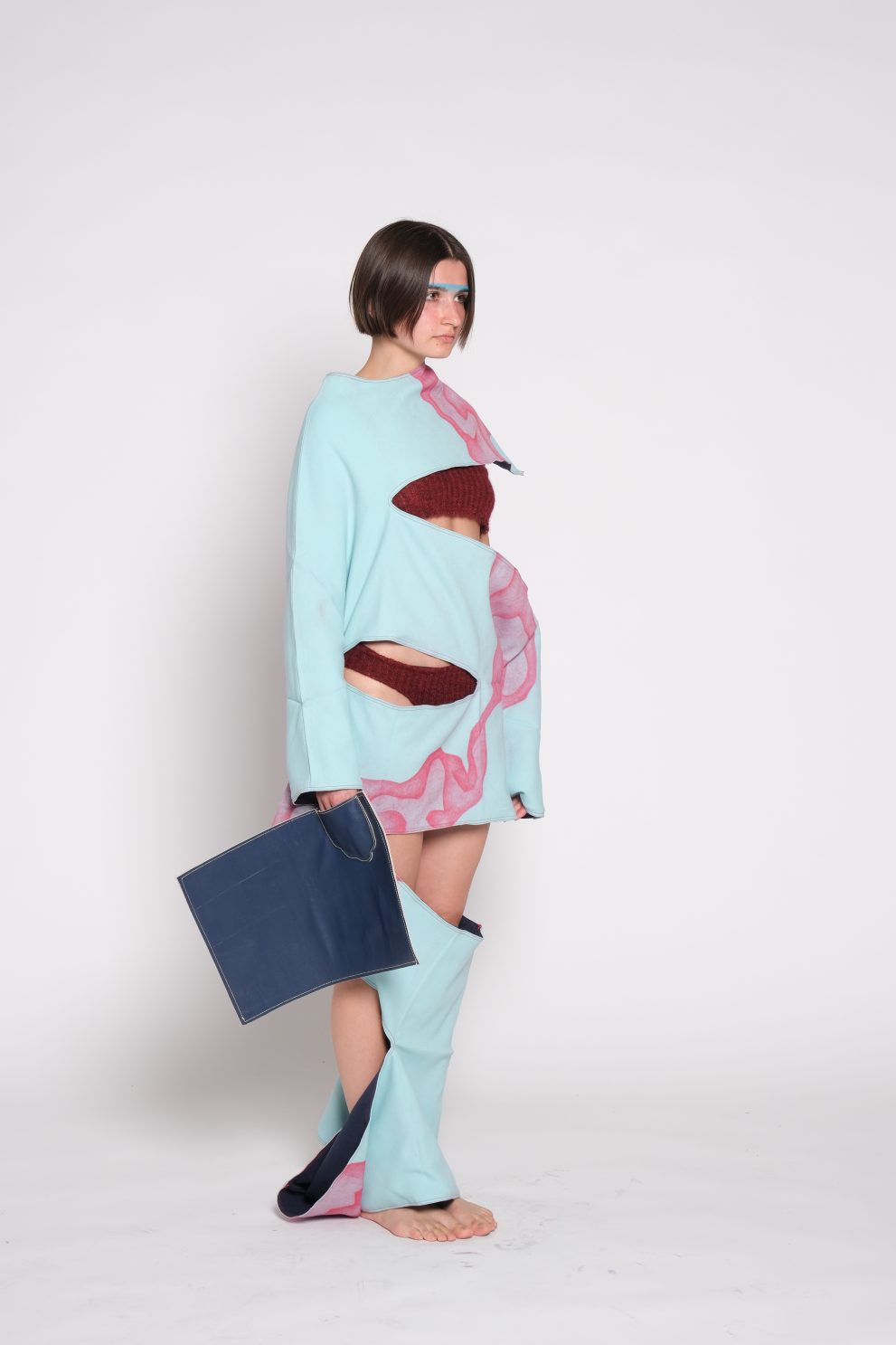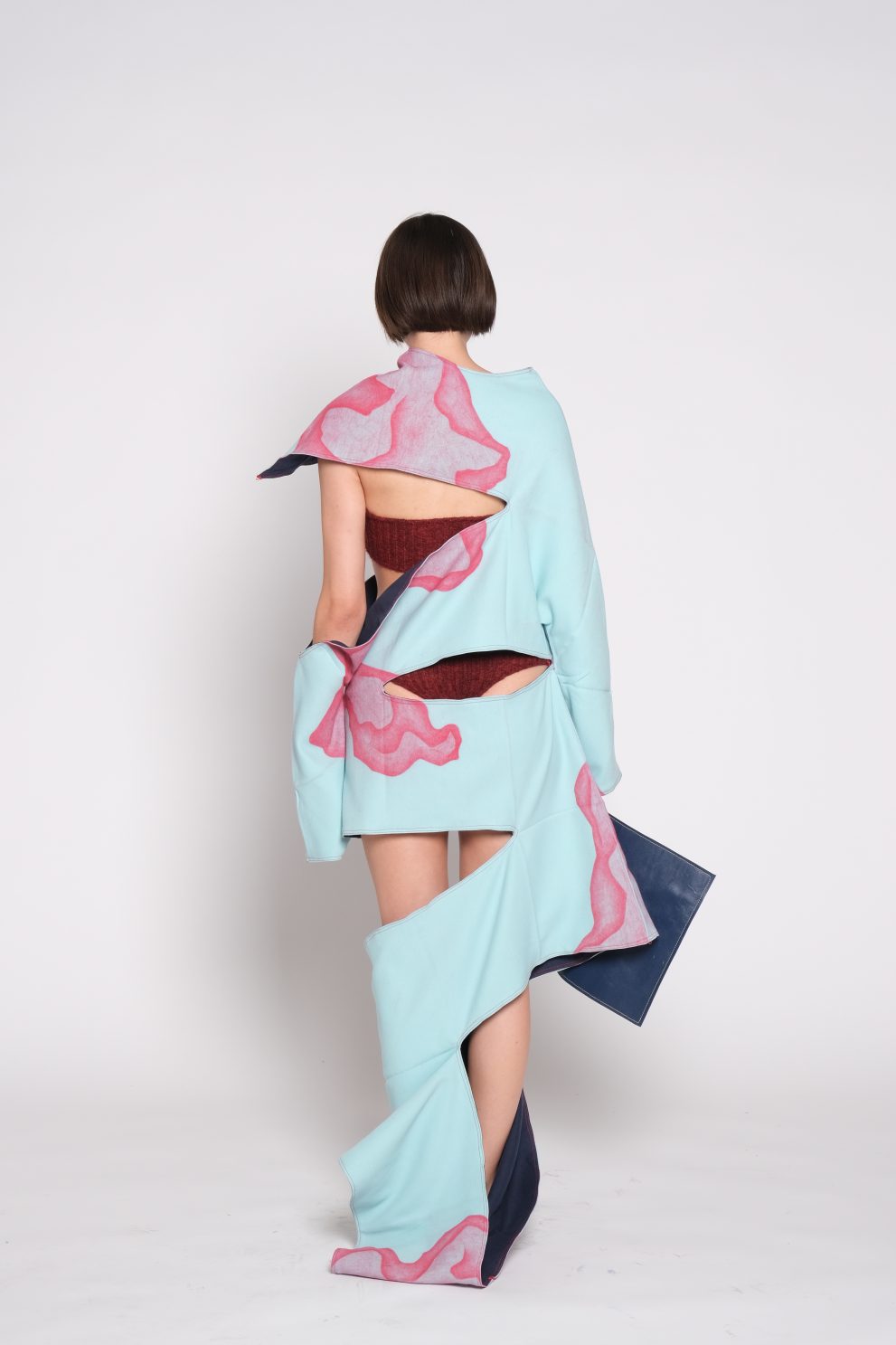Ode O Vide
When it comes to design, I’ve always felt in-between. In Fine Art, I’m too much into Decorative Art and vice versa. I’ve always had the impression that it’s a problem; you have to choose a box that you fit into, otherwise the creation has no value.
For me, it’s this ambivalence that I like, it’s the meeting of different mediums and the clash of different codes or even their complete erasure that interests me
Formy collection, I’ve decided to assume this state, this indecision, in terms of both content and form.
My starting point the emptiness of an in-between.
After several discussions with a friend, Bonnie Lavallée, who is studying typography and publishing, I realised that books and clothing are two very different yet similar fields. I started from the observation that clothes were a way of documenting and keeping track of the body, because they touch it, adapt to it and take shape in response to it.
The book, which is also a means of documenting the body, also interacts with it and is designed with it in mind (large background for the outfit, optical adjustments, material, format, etc.).
As I have long been very attached to visual arts, the creation of images and writing in my projects,
wanted to combine these two objects to document the body.
How can the researches be as important as the result?
My clothes are conceived as a book and Bonnie’s book is conceived as a garment.
As well as sharing this funcion, these uno tields share a multitude of notions and
vocabulary:
body/back/folds/screens/light/binding/material…
then looked at material aspect of these two objects. So, after all this researches and discussions with Bonnie, the study of multitude of analogies and links between our two practices, the desire for a collaborative work emerged:
to question, share and even reverse practices by experimenting with analogies.
For each of my looks, I started from a concept linked to publishing: the double page, the footnote, the illustration and its subtitle, the paragraphs, the margins, etc
also developed a series of drawings of crumpled paper balls around the idea of emptiness of the in-between.
